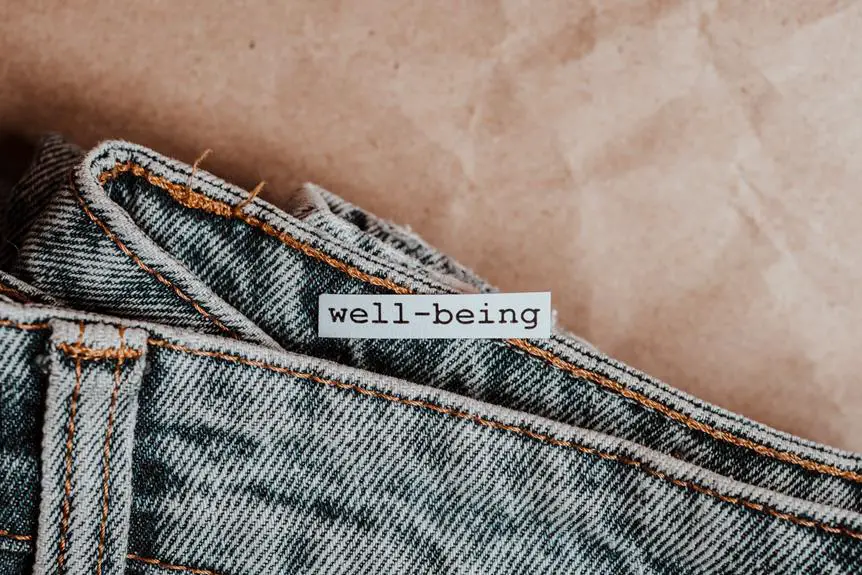Wondering if super glue can handle all fabric types? You're not alone. In fact, 62% of people have attempted to use super glue on fabric at least once. Understanding which fabrics are compatible with super glue can save you time and frustration.
This guide will delve into the factors that affect super glue adhesion, application techniques, precautions, and how to handle delicate fabrics. You'll also learn how to remove super glue from fabric and explore alternative repair methods.
By the end, you'll have the mastery you need to confidently tackle any fabric repair project with super glue.
Key Takeaways
- Fabric durability should be considered when choosing the adhesive for different fabric types.
- Different fabrics respond differently to cleaning methods and temperatures, so the glue used should be able to withstand these conditions.
- Fabric composition, including properties like porosity and flexibility, affects how well the glue adheres.
- Surface texture plays a role in adhesion, with rough-textured fabrics providing more surface area for bonding.
Understanding Different Fabric Types
Understanding different fabric types involves considering their unique properties and characteristics when choosing a suitable adhesive such as super glue. Fabric durability is a key factor to consider when determining the type of super glue to use.
For instance, delicate fabrics like silk may require a gentler adhesive to avoid damage, while durable fabrics like denim can withstand stronger adhesives.
When it comes to fabric care techniques, it's essential to understand how different fabrics respond to various cleaning methods and temperatures. This understanding will help you select the right super glue that won't compromise the fabric's integrity during care.
For example, a fabric that requires frequent washing and drying may need a super glue that can withstand these processes without deteriorating.
Factors Affecting Super Glue Adhesion
When using super glue on fabric, the fabric composition will determine how well the glue adheres.
The texture of the fabric's surface also plays a crucial role in the adhesion process.
Additionally, environmental conditions such as humidity and temperature can impact the bonding strength of super glue on fabric.
Fabric Composition and Super Glue
To determine whether super glue will work effectively on different fabric types, it's important to consider the fabric composition and how it influences super glue adhesion. Understanding these factors can help you make informed decisions when using super glue on various fabrics. Here are key considerations:
- Fabric Properties: Different fabrics have varying properties such as porosity, texture, and flexibility, which can affect how well super glue adheres.
- Compatibility: Certain fabric compositions may be more compatible with super glue due to their chemical makeup and structure.
- Super Glue Formulation: The type of super glue used and its specific adhesive properties can impact its effectiveness on different fabric types.
- Preparation and Application: Proper surface preparation and precise application of super glue are essential for achieving strong adhesion on fabrics.
Understanding fabric composition and its interaction with super glue is crucial for successful adhesion.
Surface Texture and Adhesion
Considering the fabric properties discussed earlier, you should assess how surface texture influences the adhesion of super glue to different fabric types.
Fabric compatibility plays a crucial role in determining the success of adhesion. Smooth fabrics, such as silk, may pose challenges for super glue bonding due to their low surface area for adhesion.
On the other hand, rough-textured fabrics like denim provide more surface area for the adhesive to bond, resulting in stronger adhesion.
It's important to note that super glue tends to bond well with fabrics that have a rough or porous surface texture.
Understanding the impact of surface texture on bonding will help you choose the right fabric for super glue adhesion and achieve optimal results.
Environmental Conditions and Bonding
Assessing environmental conditions is crucial for understanding the factors that affect super glue adhesion to different fabric types. Environmental impact plays a significant role in determining the bonding strength of super glue on various fabrics.
Consider the following:
- Humidity: High humidity can affect the curing process of super glue, potentially weakening its bonding strength on certain fabric types.
- Temperature: Extreme temperatures can impact the effectiveness of super glue, influencing its ability to form a strong bond with different fabric textures.
- UV Exposure: Prolonged exposure to ultraviolet (UV) radiation can degrade the bonding strength of super glue on fabrics, affecting its longevity.
- Chemical Exposure: Contact with certain chemicals in the environment can compromise the adhesive properties of super glue on specific fabric types.
Understanding and accounting for these environmental factors is essential for achieving optimal bonding results with super glue on diverse fabric materials.
Super Glue Application Techniques
You can apply super glue to fabric using a few simple techniques to ensure a strong and lasting bond.
First, prepare the fabric by ensuring it's clean and dry. Smooth out any wrinkles or folds to create a flat surface for the glue application. It's essential to work in a well-ventilated area and consider using gloves to protect your skin from the adhesive.
When applying the super glue, use a minimal amount to avoid saturating the fabric. Gently press the glued surfaces together, applying firm and even pressure for at least 30 seconds to promote bonding. Be cautious to avoid getting the glue on unintended areas, as it can create unwanted bonding.
To enhance the durability of the bond, allow the fabric to set for at least 24 hours before subjecting it to any stress or strain. Additionally, consider reinforcing the glued area with stitching for added strength.
Precautions and Safety Measures
After preparing the fabric and applying the super glue, ensuring proper ventilation and wearing protective gloves can help minimize skin contact with the adhesive.
When working with super glue on fabric, it's crucial to consider safety precautions and fabric compatibility to achieve the best results. Here are some essential safety measures to keep in mind:
- Proper Ventilation: Ensure adequate airflow in the workspace to prevent inhaling fumes from the super glue, which can be harmful when inhaled in large amounts.
- Protective Gloves: Always wear protective gloves to prevent the super glue from coming into direct contact with your skin, reducing the risk of irritation or allergic reactions.
- Eye Protection: Consider wearing safety goggles to shield your eyes from any potential splashes or fumes while working with super glue on fabric.
- Avoid Overexposure: Limit the amount of time you spend handling super glue and take breaks to minimize the impact on your skin and overall health.
Super Glue on Delicate Fabrics
When working with delicate fabrics, it's important to exercise caution and precision to ensure that the super glue application is successful and does not damage the material. Delicate materials such as silk, chiffon, and lace require special attention when using super glue due to their fabric compatibility and adhesive sensitivity. It's crucial to test a small, inconspicuous area first to assess how the fabric will react to the adhesive. Additionally, when applying super glue to delicate fabrics, use the smallest amount possible to avoid seepage and potential damage.
To help you understand the compatibility of super glue with delicate fabrics, here's a table outlining the bonding considerations:
| Fabric Type | Super Glue Compatibility | Recommended Usage |
|---|---|---|
| Silk | Be cautious, can cause discoloration | Use minimal amount |
| Chiffon | Test first, may cause stiffness | Very little amount |
| Lace | Use with care, may leave residue | Small, precise application |
Adhering to these precautions will help you achieve successful textile bonding while avoiding damage to delicate fabrics.
Removing Super Glue From Fabric
If you've accidentally gotten super glue on your fabric, don't panic. There are safe and effective ways to remove it without causing damage to the fabric.
Let's explore some simple methods for getting rid of super glue from different types of fabric without ruining them.
Fabric-Safe Glue Removal
To remove super glue from fabric, use a fabric-safe adhesive remover designed for this purpose. Here are four essential tips for safe removal and fabric preservation:
- Test in an inconspicuous area: Always test the adhesive remover on a small, hidden area of the fabric to ensure it won't cause any damage or discoloration.
- Follow product instructions: Carefully follow the instructions provided with the adhesive remover to ensure safe and effective removal of the super glue from the fabric.
- Gently blot, don't rub: When applying the adhesive remover, gently blot the affected area with a clean cloth instead of rubbing, which can spread the glue and damage the fabric fibers.
- Wash the fabric: After removing the super glue, launder the fabric according to its care instructions to ensure any residue is completely removed.
Preventing Fabric Damage
To prevent fabric damage when removing super glue from fabric, carefully follow the instructions provided with a fabric-safe adhesive remover. Prioritize preventing fraying by gently scraping off excess super glue with a blunt edge or carefully lifting it with acetone, applied sparingly to a cotton swab. Be cautious not to saturate the fabric, especially delicate or synthetic materials, as this can cause discoloration or damage.
If the fabric is washable, consider using warm, soapy water to dissolve the super glue, then gently rubbing the affected area. For tougher cases, seek professional fabric repair techniques to avoid exacerbating the issue. Avoid pulling or tearing at the glue, as this could worsen the damage and compromise the fabric's integrity.
When in doubt, consult a professional for guidance on safe and effective removal methods.
Alternative Fabric Repair Methods
You can explore alternative fabric repair methods to address different types of fabric damage. When facing fabric damage, it's important to consider alternative options to repair and salvage your beloved items.
Here are four DIY fabric fixes that can help you tackle various fabric repair needs:
- Patchwork: Utilize fabric patches to cover holes or tears in your fabric. This method not only repairs the damage but also adds a unique touch to your item.
- Needle and Thread: Basic sewing skills can go a long way in repairing fabric. Whether it's reattaching a button or stitching up a small tear, a needle and thread can work wonders.
- Iron-On Adhesive: For a quick and easy fix, iron-on adhesive can be used to mend fabric tears. Simply cut the adhesive to size, apply heat, and your fabric will be good as new.
- Fabric Glue: Specifically designed for fabric, fabric glue can be a convenient option for repairing seams, hems, or small tears. It provides a strong and flexible bond without the need for sewing.
Frequently Asked Questions
Can Super Glue Be Used to Repair Waterproof or Water-Resistant Fabrics?
To repair waterproof or water-resistant fabrics, super glue can be effective. It's great for bonding synthetic materials and repairing outdoor gear. It provides a strong and durable bond, making it a handy tool for fixing these types of fabrics.
Will Super Glue Work on Stretchy or Elastic Fabrics?
Yes, super glue can work on stretchy or elastic fabrics. It provides strong bond strength and flexibility, making it suitable for repairing such fabric types. Just ensure fabric compatibility and durability before applying the super glue.
Can Super Glue Be Used to Repair Fabrics With a Textured or Raised Surface?
Yes, super glue can be used to repair delicate fabrics with a textured or raised surface. But for the best results, using fabric patches is recommended to ensure a durable and seamless fix.
Is It Safe to Use Super Glue on Heat-Sensitive Fabrics?
Using super glue on heat-sensitive fabrics can cause chemical reactions and fabric damage. The adhesive strength may also vary depending on the fabric composition. It's best to test a small area first to avoid any mishaps.
Can Super Glue Be Used to Repair Fabrics With a Special Finish or Coating?
Yes, super glue can be used on delicate materials, but it's essential to consider the bonding strength and adhesive compatibility with specialized finishes. Always test on a small, inconspicuous area first to ensure it won't damage the fabric.
- Can Chiffon Be Washed? - April 23, 2024
- Is Chiffon Good for Wedding? - April 23, 2024
- What Is Chiffon Best Used For? - April 23, 2024







